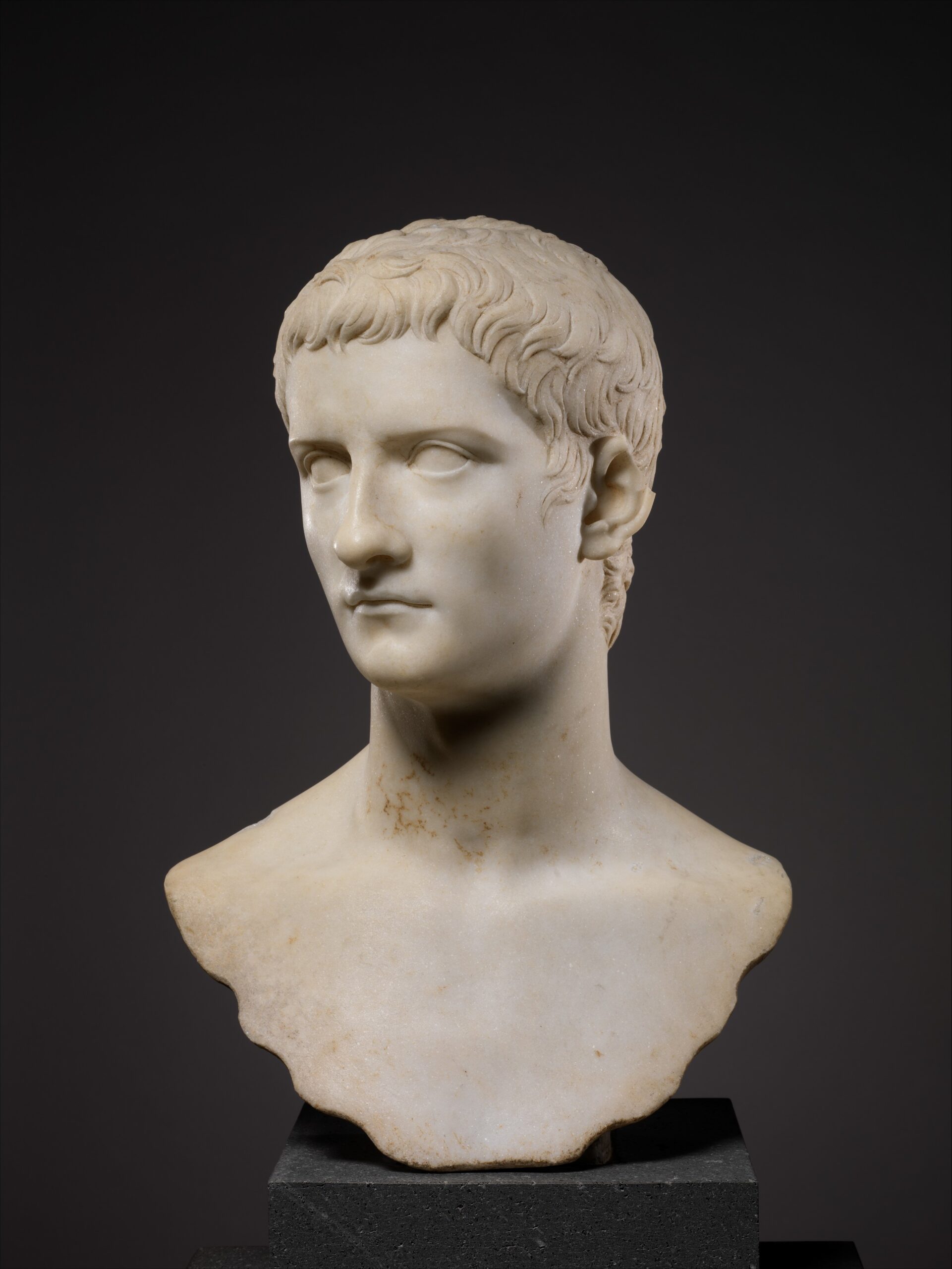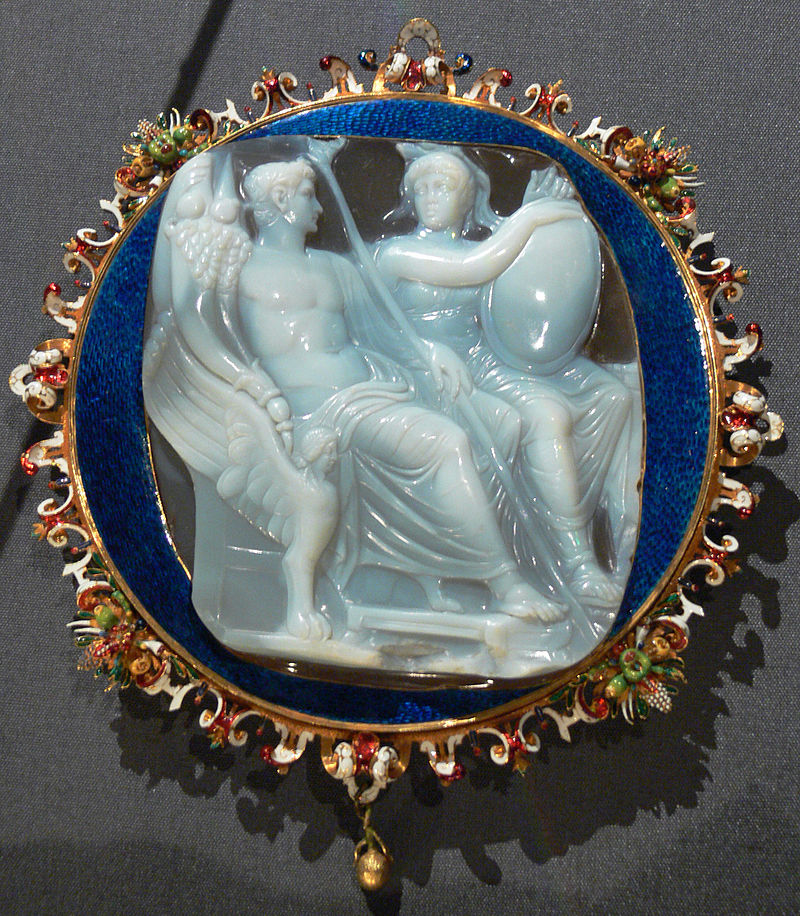By Anne Leader
Caligula was named emperor by the Roman Senate on 18 March 37 CE. He maintained the formula for imperial portraiture established by his predecessors Tiberius and Augustus to stress unity and continuity of imperial leadership. This propaganda was especially important to the Julio-Claudians, who had difficulty producing sons as heirs to the imperial throne. Caligula was the son of Germanicus (d. 19) and the great-nephew of the emperor Tiberius, himself only the stepson of Augustus, Thus, in keeping with the Julio-Claudian “look,” we see Caligula as youthful, with an angular face, protruding ears, and short hair combed forward over the forehead. Caligula’s pride, however, often comes through in his portraits. He was known more for his opulence and extravagance than effective governing, and his rule was cut short by assassination in 41 CE.
Ancient writers like Philo and Seneca described Caligula as insane, sex-crazed, and concerned only with himself and his pleasures. Suetonius and Cassius Dio went so far as to accuse him of incest. Though these claims may have merely been part of a campaign to underscore Caligula’s failures as emperor and unpopularity, his infamy continues to capture the imaginations of authors, filmmakers, and gamers.
Emperor Gaius Julius Caesar Germanicus, known as Caligula, marble. New York: The Metropolitan Museum of Art, Rogers Fund, 1914 (14.37)
Bust of Caligula, marble. Copenhagen, Ny Carlsberg Glyptotek
Roman sestertius depicting Caligula, ca. 38 CE. The reverse shows Caligula’s three sisters, Agrippina, Drusilla and Julia Livilla, with whom Caligula was rumoured to have carried on incestuous relationships.
Caligula and Rome, cameo, 37-41 CE. Kunsthistorisches Museum, Vienna




